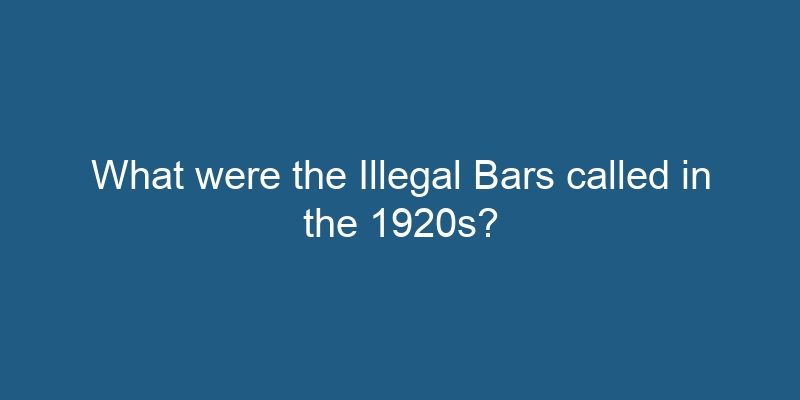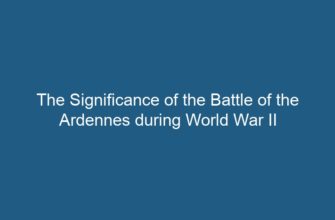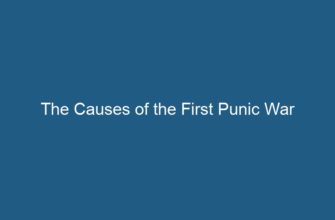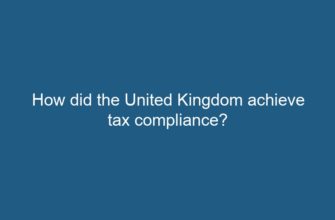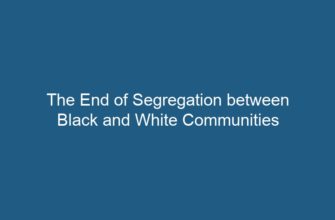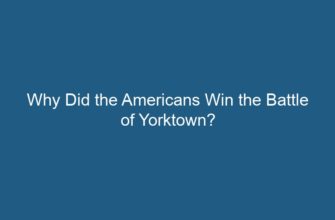In the 1920s, the United States experienced a period known as Prohibition, during which the production, sale, and distribution of alcoholic beverages were prohibited. However, this did not stop people from seeking ways to enjoy their favorite drinks. As a result, a thriving underground industry emerged, and establishments known as speakeasies or blind pigs became popular.
- Social and Historical Context
- The Rise of Speakeasies
- Operation and Organization
- History Brief: Speakeasies (Roaring Twenties)
- Impact on Society
- Women and Speakeasies
- Enforcement and Decline
- Legacy and Cultural Impact
- Frequently Asked Questions (FAQs)
- Were speakeasies only found in major cities?
- How did people find out about speakeasies?
- What types of alcohol were typically served in speakeasies?
- How did speakeasies acquire alcohol during Prohibition?
- What were the consequences for getting caught running a speakeasy?
- Did speakeasies contribute to the rise of organized crime?
- How did the repeal of Prohibition affect speakeasies?
- Conclusion
Social and Historical Context
The 1920s, often referred to as the Roaring Twenties, was a time of great social and cultural change in the United States. Following the enactment of the 18th Amendment in 1920, which prohibited the manufacture, sale, and transportation of alcoholic beverages, the country underwent a significant transformation.
Prohibition was largely driven by the temperance movement, which aimed to reduce the consumption of alcohol due to its perceived negative effects on society. However, the ban on alcohol created a lucrative black market, leading to the rise of illegal bars.
The Rise of Speakeasies
Speakeasies, also known as blind pigs, were secret bars that operated illegally during the Prohibition era. The term “speakeasy” derived from the practice of patrons speaking quietly or “easily” to avoid attracting attention from law enforcement or informants. These establishments were often hidden behind unmarked doors or located in basements, making them difficult to detect.
Speakeasies quickly became popular gathering places for individuals seeking to enjoy alcoholic beverages. They offered a sense of rebellion and excitement, attracting a diverse clientele that included both men and women from different social backgrounds. Jazz music, dancing, and entertainment were common features of these hidden bars, contributing to their allure.
Operation and Organization
Running a speakeasy required careful planning and organization to avoid detection by authorities. Owners often employed lookouts to alert them of potential raids, and passwords or secret codes were used to gain entry. Some establishments even installed escape tunnels or trap doors to enable quick escapes in case of emergency.
Speakeasies developed networks to procure and distribute alcohol. Bootleggers, individuals who smuggled or produced alcohol illegally, supplied the bars with the much-desired spirits. These networks were often intertwined with organized crime syndicates, which took advantage of the profitable market.
History Brief: Speakeasies (Roaring Twenties)
Impact on Society
The existence of speakeasies and the widespread disregard for Prohibition laws had significant social and cultural implications. The ban on alcohol led to increased criminal activity, as organized crime syndicates took control of the illegal alcohol trade. Notorious gangsters such as Al Capone rose to prominence during this period.
Despite the illegal nature of speakeasies, they became symbols of rebellion and freedom. The flouting of Prohibition laws challenged the authority of the government and sparked debates about personal liberty and the limits of government regulation.
Women and Speakeasies
Speakeasies played a significant role in challenging traditional gender norms. Women, who were increasingly asserting their independence during the 1920s, frequented these establishments alongside men. The lively atmosphere, music, and dancing provided opportunities for socialization and expression.
Flappers, a term used to describe young women who defied traditional societal expectations, often embraced the culture of speakeasies. They rejected conservative values and embraced a more liberated lifestyle, which included drinking and smoking publicly.
Enforcement and Decline
Despite efforts to enforce Prohibition, the illegal alcohol trade thrived throughout the 1920s. However, mounting public dissatisfaction, the difficulty of enforcement, and the economic impact of lost tax revenue eventually led to the repeal of the 18th Amendment in 1933.
With the end of Prohibition, speakeasies lost their illicit charm and began to decline. However, the cultural impact of these secret bars and the defiance of the law during the 1920s left a lasting legacy.
Legacy and Cultural Impact
The era of speakeasies left an indelible mark on American culture. The Roaring Twenties became synonymous with rebellion, jazz music, and the flouting of societal norms. The concept of the speakeasy continues to captivate the imagination and has been romanticized in literature, films, and popular culture.
The cultural legacy of the speakeasy can still be seen today in the revival of craft cocktails and the emergence of modern speakeasy-inspired bars. These contemporary establishments often pay homage to the clandestine nature and glamour of the roaring twenties.
Frequently Asked Questions (FAQs)
-
Were speakeasies only found in major cities?
No, speakeasies could be found in both major cities and smaller towns. The demand for illicit alcohol extended across the country, leading to the establishment of speakeasies in various locations.
-
How did people find out about speakeasies?
Word-of-mouth was the primary method of discovering speakeasies. Patrons would often share information about hidden bars with trusted friends or acquaintances to maintain their secrecy.
-
What types of alcohol were typically served in speakeasies?
Speakeasies served a wide range of alcoholic beverages, including spirits such as whiskey, gin, and rum. Cocktails, often mixed with homemade syrups and ingredients, were also popular.
-
How did speakeasies acquire alcohol during Prohibition?
Speakeasies relied on bootleggers and illegal distilleries to acquire alcohol. These sources supplied the bars with smuggled or homemade liquor.
-
What were the consequences for getting caught running a speakeasy?
Running a speakeasy was a criminal offense during Prohibition. If caught, owners and operators could face fines, imprisonment, or both.
-
Did speakeasies contribute to the rise of organized crime?
Yes, the illegal alcohol trade associated with speakeasies provided opportunities for organized crime syndicates to flourish. Gangsters like Al Capone gained power and wealth through their involvement in the illicit alcohol business.
-
How did the repeal of Prohibition affect speakeasies?
The repeal of Prohibition in 1933 marked the end of the speakeasy era. Legalization of alcohol sales diminished the allure and necessity of hidden bars, leading to their decline.
Conclusion
The illegal bars known as speakeasies that emerged during the 1920s played a significant role in challenging Prohibition laws and reshaping American society. Despite their illegal nature, speakeasies became cultural symbols of rebellion and freedom, attracting a diverse clientele and contributing to the rise of organized crime. The legacy of the speakeasy era continues to captivate and inspire, reminding us of the complexities and consequences of attempting to legislate morality.


